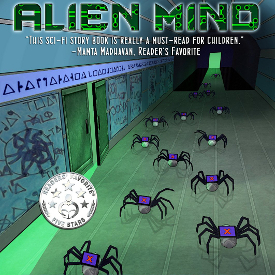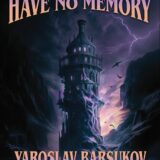 Hello and welcome to what will be an occasional feature on my blog!
Hello and welcome to what will be an occasional feature on my blog!
So – what, exactly, do I mean by ‘unknown or underappreciated’?
To put it simply – not everyone is a Kevin J. Anderson or David Weber or Eric Flint or Robert Heinlein. Some authors – I would venture to say, MOST authors – produce perfectly fine books: readable, enjoyable, well-structured, skillfully plotted and with fully-developed characters. And yet, something happens.
They never quite get the recognition they deserve. The book slides into obscurity, and the author – having watched their baby disappear from the public eye – often follows.
Well, no more!
I’ve been reading SF for basically my entire conscious life, and when I like a book, I hold onto it. So, for you lucky, lucky readers, I’m diving back into my stacks to find books which deserve another shot at the sunlight.
Imagine, if you will, Hitchhiker’s Guide meets Monty Python.
Oh, brilliant! As a fan of both, this would seem to be the ultimate book for a person like myself.
British science fiction meets British insanity – what could be more perfect?
In the late 1980s (yes, I know, we’re going back to another century here, but bear with me. There’s a point to this time travel) Douglas Adams was on top of the science fiction world.
His Hitchhiker’s ‘Trilogy’ was hugely successful, existing as books, a television series, and a radio series. A movie deal was in the works. What media was left? Well, obviously, the realm of computer games! (Remember, this is pre-XBox, pre-PS, and just barely post-Atari.)
‘Give us something,’ he was told, ‘that we can use to make a text-driven adventure. It’s got to be something with a beginning, a middle, and an end, and it has to be something that you haven’t written yet, because we don’t want the players to know how the story goes before they play.’
Um, what? You can imagine Adams thinking.
‘Oh, and it would be nice if it was related to the Hitchhiker’s books but not part of them, or at least nothing major.’
Excuse me?
Well, eventually Adams remembers about the Starship Titanic – here’s the reference, in full, from Life, The Universe, and Everything:
Many speak of the legendary and gigantic Starship Titanic, a majestic and luxurious cruise liner launched from the great shipbuilding asteroid complexes of Artifactovol some hundreds of years ago now, and with good reason.
It was sensationally beautiful, staggeringly huge and more pleasantly equipped than any ship in what now remains of history (see page 110 [on the Campaign for Real Time]) but it had the misfortune to be built in the very earliest days of Improbability Physics, long before this difficult and cussed branch of knowledge was fully, or at all, understood.
The designers and engineers decided, in their innocence, to build a prototype Improbability Field into it, which was meant, supposedly, to ensure that it was Infinitely Improbable that anything would ever go wrong with any part of the ship.
They did not realize that because of the quasi-reciprocal and circular nature of all Improbability calculations, anything that was Infinitely Improbable was actually very likely to happen almost immediately.
The Starship Titanic was a monstrously pretty sight as it lay beached like a silver Arcturan Megavoidwhale among the laser-lit tracery of its construction gantries, a brilliant cloud of pins and needles of light against the deep interstellar blackness, but when launched, it did not even manage to complete its very first radio message – an SOS – before undergoing a sudden and gratuitous total existence failure.
That’s it. That’s what he had to write from, a snippet that is mostly about the early misapplication of Improbability equations.
No wonder it took him until 1998 to get the thing written, coded, published and distributed.
Then came the suggestion: Why don’t you write a book to go with the game, tie it in, we can broaden our marketing?
The response was probably interesting but not particularly germane, except that in the end, he didn’t write it.
Terry Jones did.
Yes, that Terry Jones. From Monty Python. Who frequently appears nude in the sketches and movies.
What, you might ask, does he know about writing a book?
As it turns out, not much.
He had the plot of the game to follow – simply put, the Starship Titanic doesn’t undergo a SMEF (sudden massive existence failure) as much as dematerialize. It reappears above, of course, Earth. Smashed into a house.
Four Earthlings are there; three of them are invited aboard the ship while the fourth scarpers off. They then encounter various difficulties in trying to get the ship to function as it should and return them to Earth.
To this bare-bones plot, various details are added: industrial espionage, insurance fraud, sabotage, labor unions, and a faulty Mega-Scuttler bomb.
The whole idea is ridiculous.
Then again, so is the idea of hitchhiking across the galaxy, and he made pretty good hay from that.
Ah, but the problem with Starship Titanic is that Adams didn’t write it, Jones did, and he lacks the former’s deft touch with the ridiculous.
The dialogue is stiff and forced, at best. The plot is, as mentioned, ridiculous, and the resolution requires a deus ex machina straight out of classical Greek theater.
Yet there are moments of levity, of humour, where Adams’ direction is apparent, where the intervention more direct.
Alas, they are too few and far between to justify the book as a whole.
If you want to read this, go ahead. It’s still out there. Perhaps you can find one at a yard sale, or a library book sale.
If you’re interested in the game, well, the web site still exists. a href=”www.StarshipTitanic.com”>span style=”text-decoration: underline;”>strong>StarshipTitanic.com/strong>/span>/a>, though it doesn’t seem to do much. Finally, if you really want to play the game, there are instructions here: https://www.metafilter.com/98848/The-Post-That-Cannot-Possibly-Go-Wrong
And what happened to the game? Well, text-driven games were a dying breed by the time Adams (a notorious procrastinator and ignorer of deadlines) finally finished his end. The PlayStation was out, the PS2 two years away, the Xbox three years away – so the whole thing was, like the eponymous starship, doomed from the start.
Moving forward – I welcome your comments and suggestions! If there is a book YOU want me to review, drop me a line! You can find me on Facebook (very creatively, Adam Gaffen) or you can send an email to TheKildaran@yahoo.com OR you can simply leave a comment here!
Thanks – and I’ll be back soon with another lost treasure!











To be fair to Terry Jones, he only had one month to write the book, so the lack of quality is not surprising.
As for text-based computer games, Adams did a couple for Infocom in the 1980s including a Hitchhikers game and the non-Hitchhikers Bureaucracy. Personally, I loved the old text games. What could be more fun (and arguably more frustrating) than trying to get the babel fish in your ear? And I probably spent more time playing Zork and its successors (not created by Adams) than I have with any video game since.
I was rather disappointed when text-based games died off. So was Adams, which is why he decided to create Starship Titanic, a fully modern (1990s modern) video game environment with text based interaction with the characters. You interact with the environment much like other video games, but you interact with the people (actually mostly robots) by typing in what you want to say to them (as opposed lamely choosing preformatted statements from an ABC list). The result was hilarious and in my opinion Starship Titanic is one of the best computer games of all time.
The game’s commercial failure likely doomed future video/text hybrids because game companies (just like other industries) are risk averse. But, thinking analogously of the book/movie markets, I have to wonder if there is not a place for pure text computer games (like Zork, Hitchhikers Guide, etc..). After all, movies did not make books obsolete despite the fact that it is obvious that most people will choose to watch a movie over reading a book.